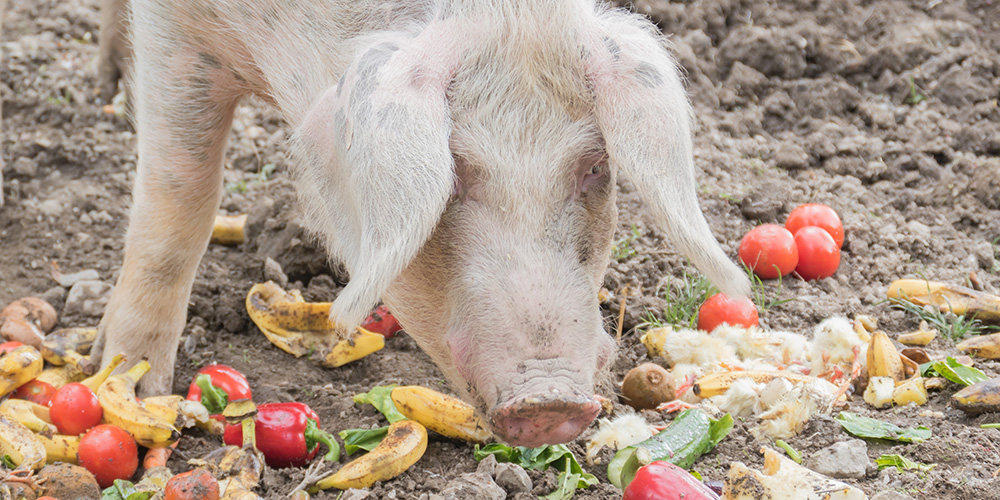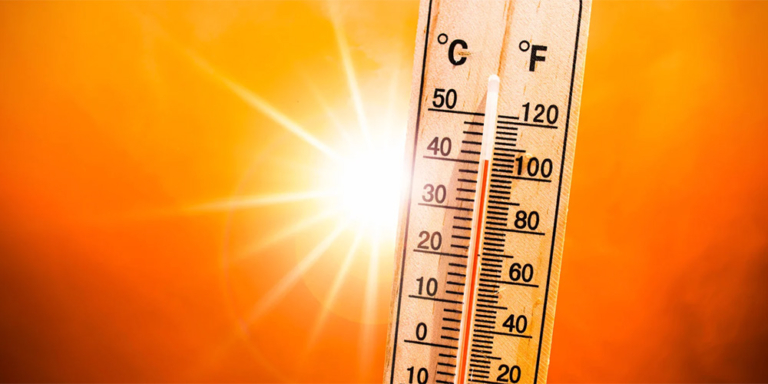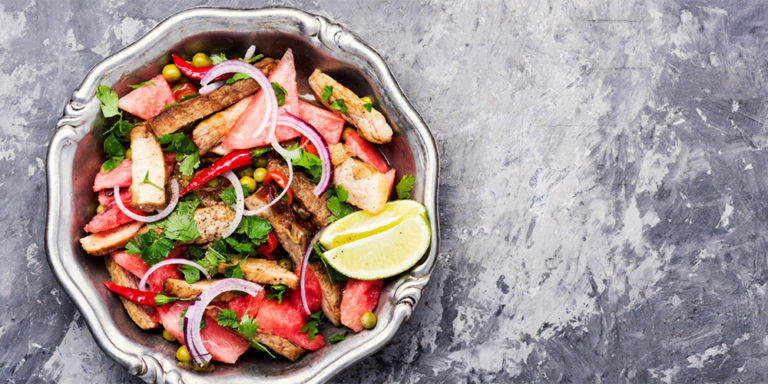Anyone who’s been to a grocery store lately knows how insane the prices have become.
It’s like you must go to the bank first to get a ‘‘mortgage’ for your food.
In fact, grocery prices are predicted to increase further in 2024, costing the average family of four an extra $700 per year.
In 2023, the average Canadian family of four spent over $16,000 in groceries per year.
Since the start of the pandemic until October 2023, grocery prices have risen 18.5%.
Meanwhile, Canadian grocery chain profits have skyrocketed. Canada’s top three grocers all posted higher profits in the last few years. In fact, research from Dalhousie University found that Loblow’s “gross profit in the first half of 2022 beat its previous best results by $180 million — equivalent to about an extra million dollars a day.”
We’ll bet your wages haven’t increased that much!
There are a lot of reasons why grocery prices are so high besides price gouging, including high-interest rates, higher energy and transportation costs, and climate impacts causing crop failure.
But one additional major and often overlooked cause is food waste.
Not only does food waste increase grocery prices, but it is also a major contributor to greenhouse gases.
If we can reduce food waste, we can get some relief both to our pocketbooks and the planet.
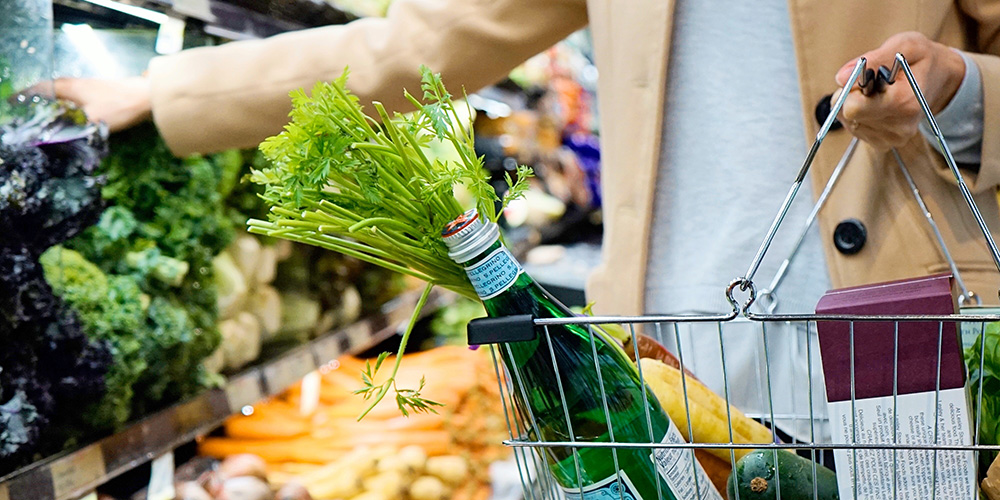

How Bad is the Problem?
In a word, bad!
Methane, a greenhouse gas emitted from decaying food, is 80 times more effective at trapping atmospheric heat than carbon dioxide.
According to the UN Environment Program, the estimated amount of methane released due to global food loss and waste is so significant that if it were a country, it would be the third largest emitter of greenhouse gases, following China and the United States.
Doug O’Brien, Vice-President of Programs at the Global FoodBanking Network, says that one-third of all food intended for human consumption is lost or wasted.
It’s important to differentiate between food loss and food waste.
Food loss occurs during production, handling, storage, processing, and manufacturing.
In contrast, food waste happens during distribution, retail, and at the consumer level.
A collaborative analysis by Canadian Second Harvest and Value Chain Management International, a consultancy specializing in food waste, found that almost three-fifths of Canada’s food loss originates from production and processing stages.
This food never makes it to market, and then, almost a third of it becomes food waste.
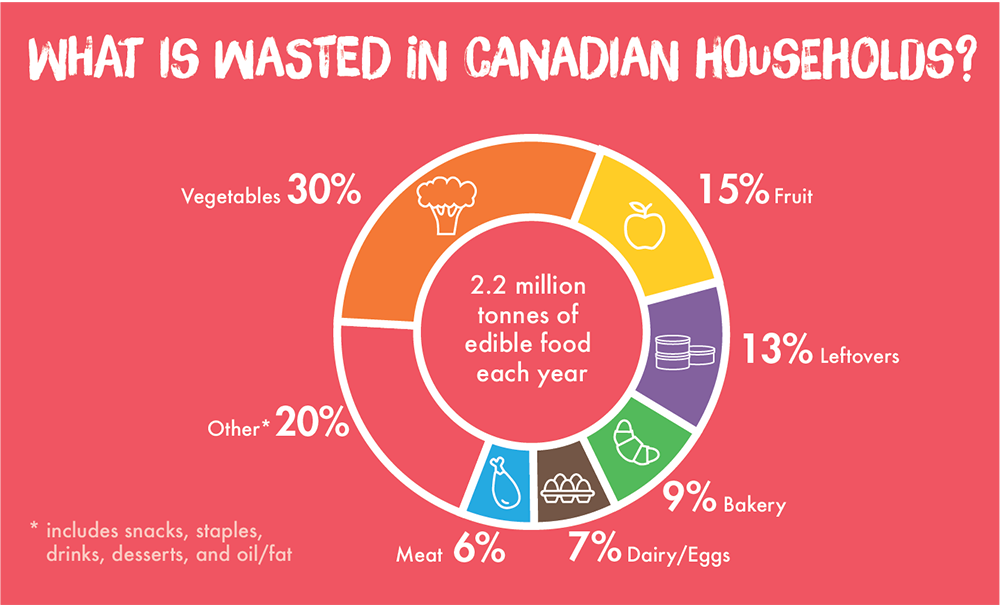

What Can We Do?
As consumers, we can’t control what happens at the production level, but we can reduce food waste in our homes.
Love Food, Hate Waste estimates that almost two-thirds of the household food we throw out could have been used with better storage, planning and use.
For their complete list of tips on reducing household food waste, go here.
But what about the food wasted in Canada by grocers and retailers?
Fortunately, several Canadian initiatives are coming to rescue perfectly good food before it hits the landfill or even the compost bin.
Grocers waste about 12 percent of the roughly 50 million tons of food wasted every year in Canada.
Second Harvest
Second Harvest works with grocers, restaurants (and other businesses across the food supply chain) to reduce the amount of edible food going to waste.
The food Second Harvest recovers is redirected to thousands of charities and non-profit organizations, to ensure more people have access to healthy food.
The FlashFood App
Usually, food nearing its expiration date is tossed out by grocers, but this Canadian-made app offers consumers massive savings on fresh food items like meat and produce that are nearing their best-before date at grocery stores across Canada.
If you want to save on your grocery bill and help save the planet, this is one app you’ll want to try!
It’s a win-win. Consumers win with cheaper food, grocers win by recouping costs, and the planet wins by keeping food out of landfills.
Loop Resource
Sometimes fresh produce becomes a little too bruised or a little too ‘ripe’ to be appealing for human consumption but is perfectly palatable, healthy and nutritious for animals.
Rather than going to the landfill, this food could go to livestock like cattle, pigs, goats and chickens for feed.
Loop Resource, based in Dawson Creek, British Columbia, has established a food redistribution network involving nearly 500 grocery stores and approximately 4,000 small farms throughout Canada.
The grocer/farm/Loop partnership focuses on redirecting excess food from these retailers to farms every week, preventing perfectly good food from being discarded in landfills where it would contribute to methane emissions that warm the planet.
This surplus food is used to feed livestock, offering an alternative and supplemental food source to highly processed and expensive livestock feed, resulting in healthier and happier animals.
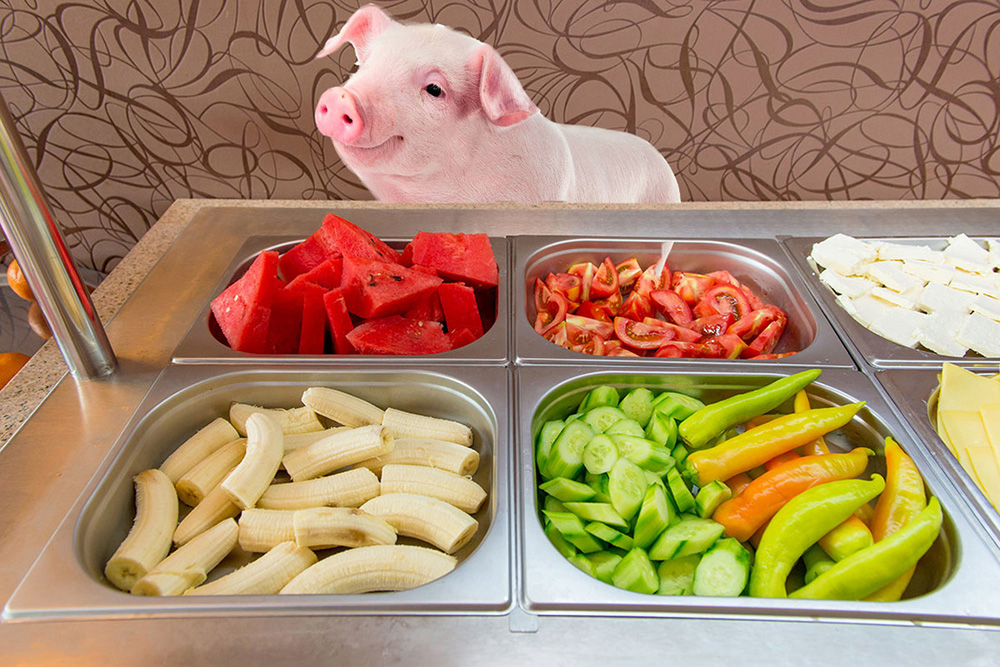

For example, Kristy Sivorot’s cows are fanatics about raw potatoes. She told the Tyee, “They’ll fight over the potatoes. They’ll push each other around like ‘My potatoes; no, my potatoes,’”
Farmers in Alberta and across Canada are currently facing a critical shortage of winter feed for their livestock, mainly due to persistent drought conditions over the last three years.
With a constant supply of ‘waste food’ from supermarkets, most of these animals can be fed.
Since it began in 2017, Loop has diverted more than 266 million pounds of food away from landfills and toward livestock in need.
Because the farmers on the Loop program aren’t paying as much for feed, they can pass on savings to their customers. Grocery stores also save money by reducing their landfill tipping fees. In the end, this means we’ll pay less for food.
Peter Lavandier, food store manager at Dawson Creek Co-op, said his store saves an average of $25,000 per year in landfill fees by diverting food through Loop.
Overall, it is a win-win-win for all involved.
Instead of seeing food waste as a problem, these Canadian companies are seeing waste as a resource. They are diverting vast amounts of perfectly good food back into the mouths of people and animals.
The more we can reduce waste, the less our food will cost, and the more the planet will benefit.
What’s not to love about that?
